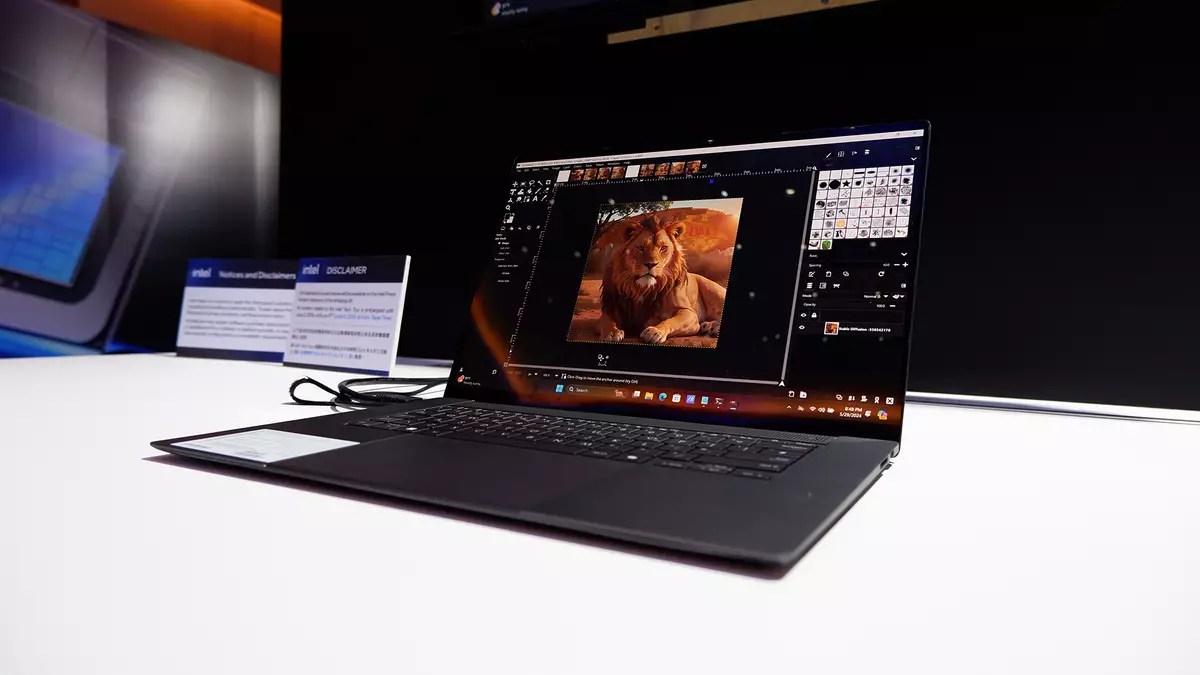In the ever-evolving realm of technology, Intel’s advancements with its upcoming Lunar Lake mobile chips are creating significant waves, especially regarding power efficiency. The prospect of a new generation of processors that not only promises high performance but also enhances battery life has caught the imagination of consumers and professionals alike. Alongside Intel’s cutting-edge processor design, a report highlights the innovative partnership with BOE, leading to the introduction of their advanced Winning Display 1Hz technology. Together, these advancements herald a potential leap forward in how mobile devices will manage power consumption.
Power efficiency is a critical issue for mobile devices, particularly as users demand both performance and longevity from their gadgets. Intel’s declaration of creating its most efficient x86 processor is coupled with exciting metrics regarding battery longevity. The recent report on BOE’s Display technology suggests that they have found a way to cut display power consumption by an astonishing 65%. This figure, while exciting, beckons a deeper examination of how such dramatic reductions could realistically be achieved in daily use.
The core technology enabling this power reduction involves a combination of Intel’s Intelligent Display Technology (IIDT) 2.0 and BOE’s proprietary techniques. Among them are Autonomous Low Refresh Rate (ALLR), User-Based Refresh Rate (UBRR), and PixOptix. Each of these components plays a role in actively adjusting display settings based on usage patterns—detecting presence and dynamically optimizing refresh rates to align with user activity. By only demanding high refresh rates when necessary, this new approach aims to extend battery life significantly.
Imagine a scenario where you’re watching a video on one half of your laptop screen while jotting down notes on the other. The technological synergy hinted at in the report suggests that while the video plays with a smooth refresh rate, the note-taking interface could operate at a lower rate, thereby conserving precious battery life. This innovative method of scaling refresh rates promises an individual tailored experience that seems to fit seamlessly into the user’s daily routine.
However, while the theory is impressive, practical implications must be thoughtfully considered. Operating a display at a mere 1Hz could create usability challenges; specifically, the question of whether such a low refresh rate would suffice for everyday tasks arises. Furthermore, maintaining optical flicker performance at lower refresh rates becomes critically important. Consumers must know that the technology doesn’t just perform theoretically but translates effectively into their everyday tasks.
As Asus has indicated, their Vivobook S 14 anticipates an impressive 27-hour battery life, attributing this to Lunar Lake’s efficient architectures combined with a robust 70 Whr battery. However, this leads us to a crucial point: While the promises of power savings are appealing, real-world performance often serves as the ultimate gauge. Users will need to test these advancements in practical scenarios to evaluate their effectiveness thoroughly.
One practical concern regarding the implementation of adaptive refresh rates is user experience. While shifting refresh rates may help conserve battery life, there is a potential downside. The constant adjustment of display settings could become distracting or frustrating. Similar to issues seen in OLED technology with burn-in protection mechanisms, if the adjustments become too abrupt or noticeable, they could detract from the seamless experience users expect.
In sum, Intel and BOE’s collaboration in introducing cutting-edge mobile power management techniques signifies a forward-thinking approach that aims to reconcile performance with energy efficiency. As technology continues to advance, the focus on sustainability becomes increasingly imperative. Innovative methodologies like IIDT 2.0 showcase how intelligent systems can make informed decisions to enhance user experience while minimizing energy consumption.
Nevertheless, developers, technologists, and manufacturers must remain engaged in rigorous testing and user feedback loops. Ensuring that new systems actually deliver on their promises without compromising user experience is critical to the success of these innovations. As we move toward a future where our devices become smarter, the critical question remains: How can technology foster efficiency without sacrificing the usability we rely on in our day-to-day lives? The answer lies not only in innovation but also in the careful consideration of its practical application.


Leave a Reply